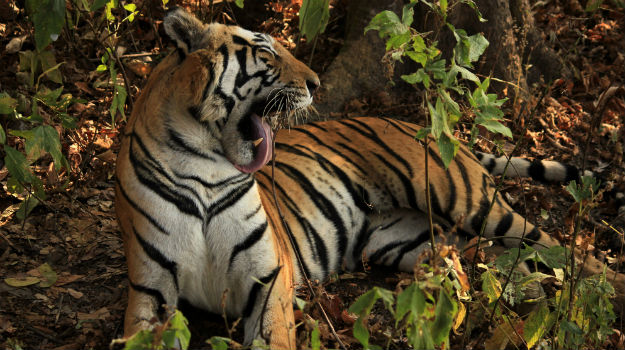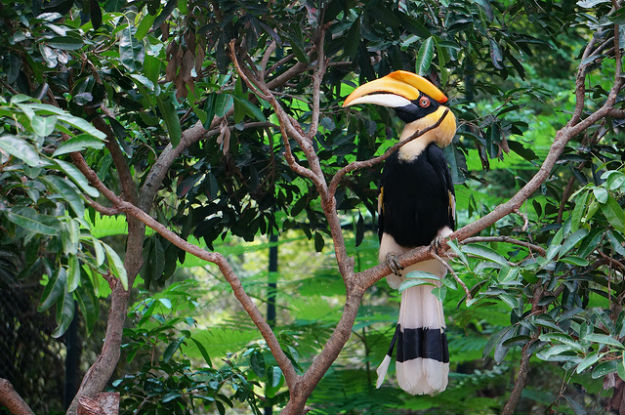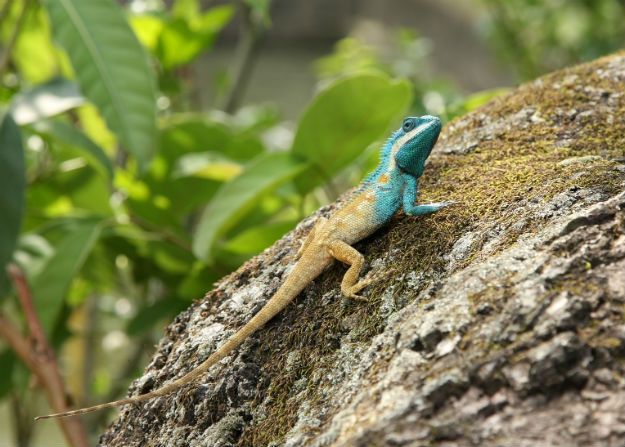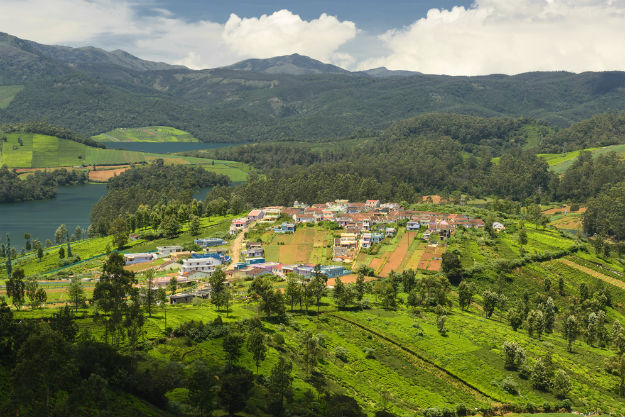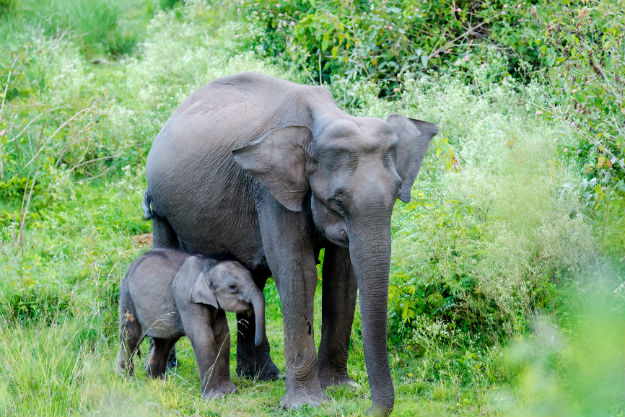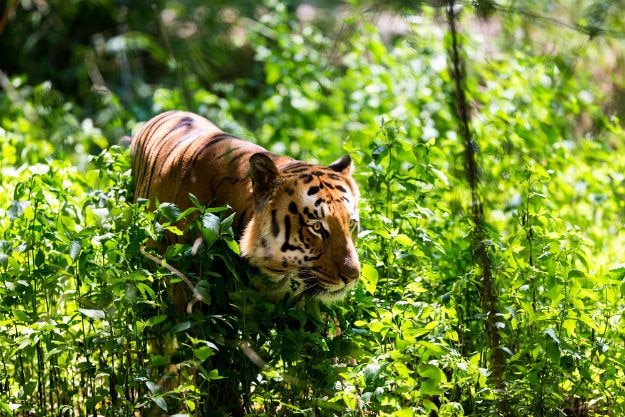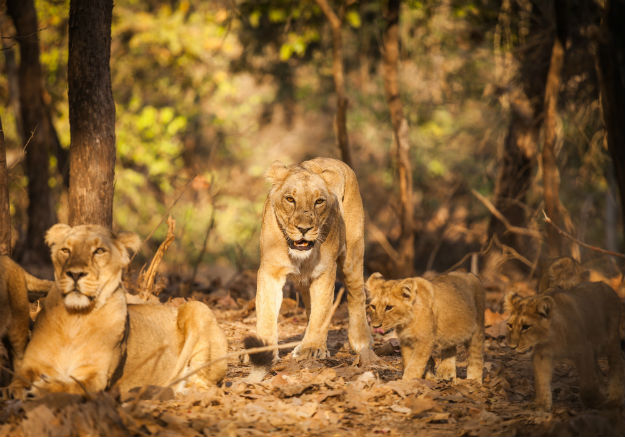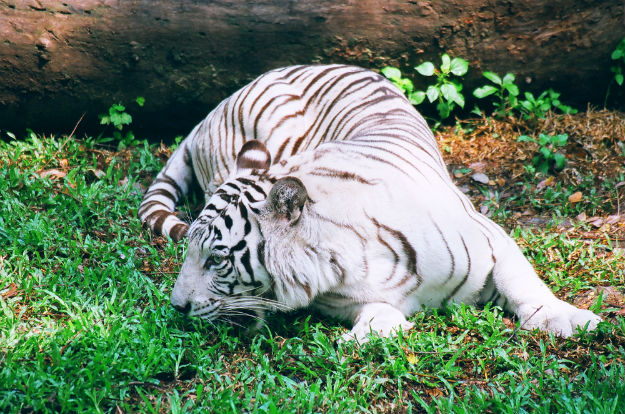India is home to some of the finest
forests of the world. From lush green pine and dedoar trees to diverse
wildlife ranging from tigers to elephants, India’s forests are home to
some of the most amazing living species. A vacation amidst one of these
forests can prove to be a rejuvenating and enriching experience. Not
only will it make you feel closer to nature, it will also give you a
better understanding of your country and the beings that reside in it. (
ALSO SEE Top 20 haunted places in India that could scare you to death!) Here are the 10 most amazing forests in India you must check out at least once.
Sundarbans, West Bengal
Located in the eastern state of West Bengal. the Sundarbans are known
to be home to the white tiger (a variant of the Royal Bengal tiger).
The vast Sundarbans National park is part of the Sundarbans delta which
cover close to 10,000 square kilometres and are the largest deltas in
the world. The lush green mangrove forest is a tiger reserve and a
biosphere reserve. A large number of Sundari trees spread across the
forest which also houses fishing cats, leopard cats, macaques, wild
boar, Indian grey mongoose, fox, jungle cat, flying fox, pangolin, and
chita.
DO SEE 5 places you didn’t know were UNESCO World Heritage Sites
The best place to spot the Asiatic Lion, Gir forest in Gujarat is a
delight for wildlife lovers. The Gir National Park is spread over 1,412
sq km in Junagadh district of Gujarat. It was the erstwhile game
preserve of the Nawab of Junagadh and was established as a national park
in 1965 with the aim to protect and increase the lion population, which
had sunk to two dozen in the early 20th century. Apart from the Asiatic
lions, the dry deciduous forest is home to several leopards which
includes jungle cat, desert cat, rusty spotted cat. ou will also find
sloth bears, Indian cobras, striped hyenas, golden jackals, Indian
mongoose, Indian palm civets, ratels, chital, nilgai, sambar,
four-horned antelope, chinkara and wild boar.
Khasi hills, Meghalaya
The stunning northeast of India is famous for its vast, green,
sprawling Khasi Hills. The beutiful Khasi forests are part of the
Meghalaya subtropical forests eco region. Not only are they extremely
picturesque all year round thanks to the high amount of rainfall in the
region, they are also responsible for the clean and rejuvenating
ambiance of Meghalaya making it a tourist delight.
DO SEE This forest in the Western Ghats of India glows in the dark!
Namdapha National Park, Arunachal Pradesh
The Namdapha National Park in Arunachal Pradesh is the third largest
national park in the world. Spanning over an area of 1985 sq.km., with
177 sq.km. in buffer zone and 1808 sq.km. in the core area, the Namdapha
National Park forms the greatest forest region of India. It is nestled
between the Patkai range and Dapha bum range of Mishmi Hills. The park
is home to snow leopards, clouded leopards, common leopards, tigers,
dholes, wolves, Asiatic black bears, red panda, red fox, yellow-throated
marten, Slow Loris, Hoolock Gibbons, Capped Langurs, Assamese Macaques
and Rhesus Macaques. Its biggest draw is the critically endangered
Namdapha Flying Squirrel which is only found here.
Jim Corbett National Park, Uttarakhand
Uttarakhand’s Jim Corbett National Park is one of India’s most
popular tourist attractions, especially for wildlife lovers. Established
in 1936, it is India’s first national park. The most commonly found
wildlife at im Corbett includes wild elephants, sloth bears, langurs,
rhesus macaques, peacocks, schools of otters, several types of deer
including chital (spotted deer), sambars, hog deer and barking deer. It
is one of the best forests of India to spend a peaceful vacation in.
Bandipur National Park, Karnataka
Karnataka’s Bandipur National Park is a forest spread over 874 sq km.
It was once the private hunting ground of the Maharaja’s of Mysore. You
can find tigers, Indian elephants, spotted deer, gaurs (bison), and
antelopes among other species here. The towering Western Ghats
surrounding the park give it a breathtaking backdrop.
Nilgiri Biosphere reserve, Tamil Nadu
Stretching to parts of the Western Ghats and Nilgiri Hills in south
India, the Nilgiri Biosphere reserve is an International Biosphere
reserve that attracts nature lovers all year round. It was declared a
UNESCO World heritage site in 2012. Tribal groups like the Todas, Kotas,
Irullas, Kurumbas, Paniyas, Adiyans, Edanadan Chettis, Cholanaickens,
Allar, and Malayan are native to the Nilgiri Biosphere reserve.
Keibul Lamjao National Park, Manipur
Another gem in northeast India, the Keibul Lamjao National Park is
famous for being the only floating park in the world. It is an integral
part of the popular Loktak lake and was declared a National Park in
order to preserve the natural refuge of the endangered Manipur Eld’s
deer also called the dancing deer, listed as an endangered species by
IUCN.
Vandalur Reserve forest
A protected forest area in the southwestern part of Chennai, the
Vandalur Reserve forest is one of the best forest reserves in south
India. It also included the Madras zoo which is a popular attraction.
The Vandalur Hill provides stunning views of the surroundings and makes
for an excellent offbeat holiday.
Kanha National Park
And then there is Kanha National Park, the largest national park in
Madhya Pradesh. It is famous for being home to about 300 species of
resident and migratory birds. However, what it is most popular for is
the barasingha (swamp deer). The sprawling sal and bamboo forests in
Kanha make spotting the Royal Bengal tiger, leopards, sloth bears,
sambhars, chitals, gaur and the Indian wild dog quite easy here. Kanha
is also credited for being the forest that inspired British author
Rudyard Kipling to write The Jungle Book.
NOW SEE 10 best places to spot tigers in India
Have interesting travel photos you’d like to share with us? Send
photos from your travels to travel@corp.india.com, don’t forget to
mention where you’ve shot the picture and get a chance to be featured on
our website! So what are you waiting for? Hurry!
Have something to add to this story? Post your comments in the discussion board below; we will be thrilled to hear from you!
http://www.india.com/travel/articles/top-10-forests-of-india-that-every-nature-lover-must-visit/
